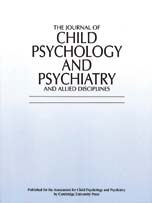Cognitive and Educational Attainments at School Age of Children Who Failed to Thrive in Infancy: A Population-based Study
Published online by Cambridge University Press: 01 May 1999
Abstract
A 1-year cohort of children born at term in Newcastle-upon-Tyne in 1987/8 was screened for failure to thrive in infancy using a conditional longitudinal standard which identified those whose weight gain was in the lowest 5%. A group of 136 cases and 136 controls (from the same GP practice and living in a neighbourhood with the same deprivation index) was followed up at 7–9 years of age, when 79% of cases and 87% of controls were successfully studied. Cases at 7–9 were significantly shorter (mean 126.0 cm, SD 5.6) than controls (mean 130.7 cm, SD 5.9); adjusted for parental heights a difference of 4.4 cm (95% CI 2.92 to 5.90 cm) remained. They had smaller head circumferences (mean 51.9 cm, SD 1.8) than controls (mean 52.8 cm, SD 1.7), were significantly lighter (medians 23.8 kg, IR 21.5 to 26.9 in cases, and 27.9 kg, IR 25.2 to 31.6 in controls) and had a lower body mass index (median 14.9, IR 14.1 to 16.0 in cases, and 16.3, IR 15.3 to 17.8 in controls). Despite these large growth differences, no statistically significant differences in cognitive outcomes were found. Mean IQ was 87.6 (SD 17.4) in cases and 90.6 (SD 17.1) in controls; after adjustment for organic cause and mother's IQ the mean difference was 1.7 IQ points (95%CI −5.2 to 1.9). There were no statistically significant differences in the reading, spelling, or reading comprehension scores; the mean standardised reading score was 93.5 (SD 16.2) for cases and 94.5 (SD 15.6) for controls. These results show that when carefully defined by velocity-based anthropometric criteria, nonorganic failure to thrive in infancy is followed by persisting stunting and wasting, and a reduced head circumference, but is not associated with cognitive or educational disadvantages at school age.
- Type
- Research Article
- Information
- The Journal of Child Psychology and Psychiatry and Allied Disciplines , Volume 40 , Issue 4 , May 1999 , pp. 551 - 561
- Copyright
- © 1999 Association for Child Psychology and Psychiatry
- 54
- Cited by


